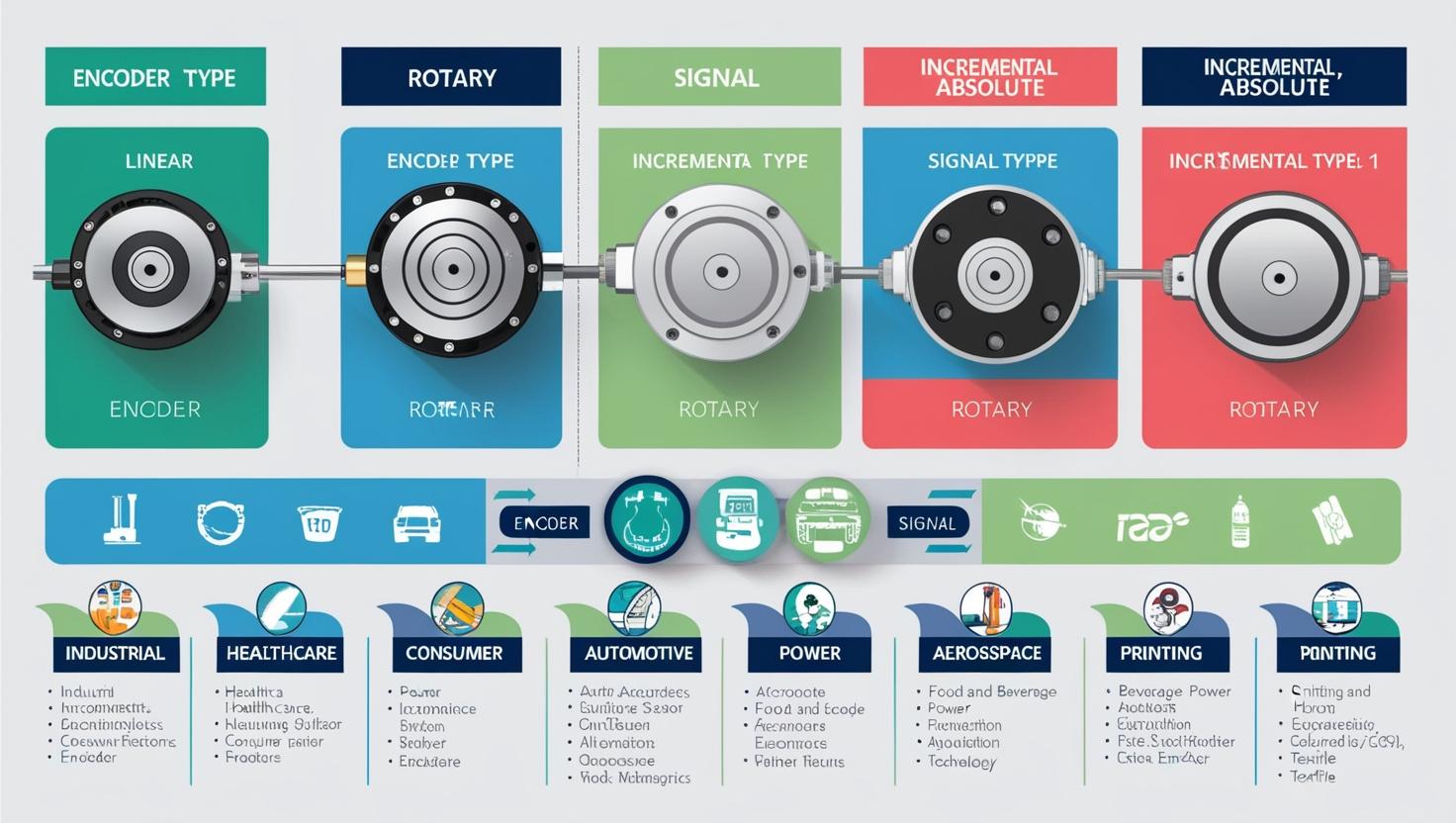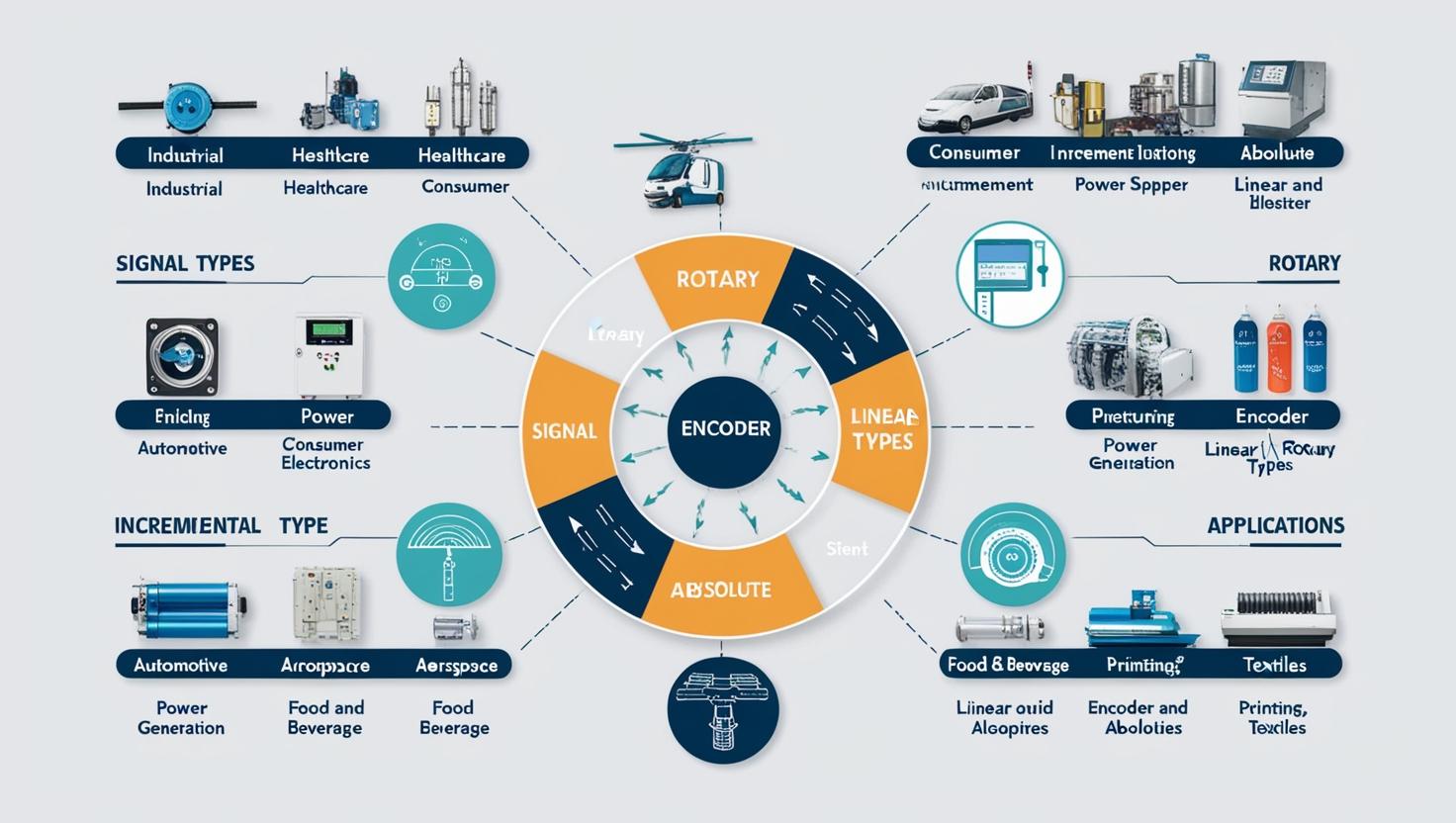The North America encoders market is witnessing a significant surge, driven largely by the region’s rapid shift toward industrial automation and smart manufacturing. Encoders, vital components in motion control systems, are becoming increasingly essential across industries including automotive, aerospace, robotics, consumer electronics, and medical devices. As North America continues to invest in digital transformation, the encoder market is expected to grow at a robust pace over the coming years.

Rising Demand from Industrial Automation
The proliferation of Industry 4.0 technologies is one of the key drivers accelerating encoder adoption in North America. Manufacturing plants are evolving into smart factories with interconnected machinery and AI-driven systems that demand high-precision feedback components like encoders. These devices enable real-time motion sensing and control, ensuring efficiency, safety, and reduced downtime. The automotive industry, in particular, is utilizing rotary and linear encoders for advanced assembly line automation and electric vehicle component testing.
Technological Advancements in Encoder Systems
Recent innovations in optical, magnetic, and capacitive encoders are enhancing their accuracy, durability, and versatility. Encoders are now designed to withstand harsh environments, making them ideal for applications in aerospace and oil & gas sectors. The integration of IoT-enabled features allows for predictive maintenance and remote monitoring, reducing the need for manual inspections. This evolution in encoder technology is attracting investments and expanding the customer base across the region.
Download PDF Brochure @
https://www.marketsandmarkets.com/pdfdownloadNew.asp?id=14566162
Key Sectors Fueling Growth
Apart from industrial manufacturing, sectors such as healthcare, robotics, and consumer electronics are increasingly integrating encoders for high-performance applications. In the medical field, encoders play a critical role in devices such as robotic surgical instruments, imaging systems, and diagnostic equipment. Meanwhile, the growing adoption of warehouse automation and robotics in logistics is further contributing to the rising demand for compact, high-resolution encoders.
Government Support and Regional Investments
Government initiatives aimed at strengthening domestic manufacturing and boosting technological self-reliance are favorably impacting the encoders market. Grants, subsidies, and smart infrastructure projects are encouraging small and medium-sized enterprises (SMEs) to upgrade their production lines with motion control systems. Additionally, North American companies are investing heavily in R&D to develop next-gen encoder solutions that align with the sustainability and energy efficiency goals of modern industries.

key developments in the North America Encoders Market
Expansion of Smart Manufacturing Facilities
Major manufacturers across the U.S. and Canada are investing heavily in smart factories equipped with advanced automation technologies, driving demand for precision encoders in robotic arms, conveyors, and CNC machinery.
Rise in Demand for Compact and High-Resolution Encoders
As industries push for miniaturization and enhanced performance, there is a growing preference for compact, high-resolution optical and magnetic encoders that offer precise feedback in limited spaces.
Integration with IoT and AI Systems
Modern encoders are now being embedded with IoT capabilities, enabling real-time data collection and predictive maintenance. These “smart” encoders contribute to improved machine uptime and process optimization.
Strategic Collaborations and Mergers
Key players such as Honeywell, Rockwell Automation, and TE Connectivity have entered strategic partnerships or acquired smaller encoder technology firms to broaden their product portfolios and expand their regional presence.
Growth in Robotics and Warehouse Automation
With the rise of e-commerce and demand for fast logistics, encoders are increasingly deployed in robotic systems and automated guided vehicles (AGVs) for accurate navigation and positioning.
Government Initiatives to Support Automation
U.S. federal and state-level initiatives promoting advanced manufacturing and the adoption of Industry 4.0 technologies are creating favorable conditions for encoder adoption in domestic production environments.
Innovation in Harsh-Environment Encoders
New developments in rugged encoder designs capable of functioning in extreme temperatures, dusty, or humid environments are enabling broader usage across defense, aerospace, and energy sectors.
Challenges and Outlook
While the outlook for the North America encoders market is optimistic, it does face challenges such as supply chain disruptions, component shortages, and pricing pressures. However, with growing digital adoption and demand for precision engineering, the market is expected to overcome these hurdles.
With the industrial automation wave sweeping across North America, the encoders market is set for a promising trajectory. As industries seek smarter, faster, and more efficient motion control systems, encoders will remain a cornerstone technology powering the region’s journey toward smart manufacturing and beyond.
FAQ
What is driving the growth of the North America encoders market?
Answer:
The market is primarily driven by increasing adoption of industrial automation, rise in smart manufacturing practices, demand for precision control in robotics, and integration of encoders with IoT and AI systems.
Which industries are the key adopters of encoders in North America?
Answer:
Major industries include automotive, aerospace, electronics, healthcare, logistics, and food & beverage. The rise in robotic applications and motion control systems in these sectors boosts encoder usage.
What types of encoders are most in demand?
Answer:
Optical encoders, magnetic encoders, and rotary encoders are in high demand. However, due to their high accuracy and robustness, absolute and incremental encoders are also seeing significant traction.
How are encoders contributing to Industry 4.0?
Answer:
Encoders provide precise real-time feedback for motion and positioning, enabling smart systems to monitor performance, predict maintenance, and improve overall efficiency in automated environments.
